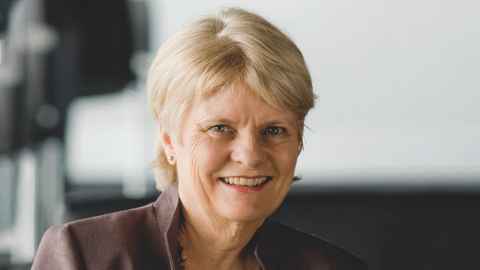Susan St John on the ‘strange’ tax debate
26 April 2023
OliverShaw’s Sapere tax report is long, difficult to absorb and hardly holistic, writes Susan St John.

What a strange debate we are having about tax. First there is tax partnership OliverShaw’s dense 200 page commissioned report from a firm called Sapere released last week. Sapere had been asked to “cast an eagle eye over the tax system and answer this question: We know the tax system is undeniably complex, but is it fair?”
The triumphal message from Sapere is a resounding yes.
KEY FINDINGS FROM THE REPORT:
The good news is, it’s working, and it’s fair.
Progressive Income Contributions
Don’t be fooled, high-wealth individuals ARE paying their fair share, with tax payments increasing as their income grows.
Lower Effective Tax Rates
Most individuals pay less than the statutory tax rates due to deductions, exemptions and other contributing factors.
Disparities in Tax Rates
Singles paying rent and low-income earners face some of the highest tax rates in the system.
Tax Policy Impact
Government tax policies encourage high-wealth individuals to invest in low-taxed activities, such as investment in business, as well as buying and building homes.
Holistic Tax Consideration
To evaluate income tax requires considering benefits like Working for Families, which can greatly impact effective tax rates and overall tax burden.
OliverShaw hedge their bets a bit but interpret the main messages (of what must have been a very expensive report) to be:
- In general, as should be expected, average effective tax rates are lower than statutory tax rates at all income levels because of policy decisions not to tax all types of economic income.
- Overall, high income earners pay the most tax and fund most government expenditure.
- Even taking into account the above, average effective tax rates increase as the real economic incomes of all households increase.

What do we make of that? The ‘rich’ pay the most tax? That all is well, and everything is fair? The report is long and difficult to absorb quickly as Terry Baucher has noted. So here are some of my very preliminary thoughts and reactions.
Sapere have their own ideas about how to evaluate the overall tax burden that have little to do with standard tax principles. They only considered income tax and excluded GST- so it is hardly holistic. Their idea of effective tax rates, to be honest, doesn’t seem to take us far.
But let’s think about a very different, but more intuitive and yet standard approach to evaluating tax. That is, for a required level of spending for our collective needs, taxes must be raised in accord with the well-worn principles of horizontal and vertical equity, efficiency and administrative simplicity. The tax system as a whole, has to meet the equity principle; for example a regressive GST requires a more progressive income tax to make the system overall progressive.
Measuring progressivity requires that the concept of full economic income is used, so all untaxed income and imputed income from owning assets must be included as well as windfall gains. The overall degree of progressivity is a political decision, but we may have got it right if our needs are met, voters are happy, and there are no extremes of poverty and wealth.
It does not require that selected payments should be netted off as Sapere does.
To evaluate income tax requires considering benefits like Working for Families, which can greatly impact effective tax rates and overall tax burden.
Let’s take the horizontal equity principle—equals should pay equal tax. In the household income analysis done by the Ministry of Social Development every year (Perry reports) the principle of equivalisation is heavily relied on. The idea is that households of different sizes, on the same income do not have the same standard of living.
Let’s take a couple on net core benefit of $607 per week or $31,564 per annum. They just scrape by. Add in three young children and they would need approximately $50,502 (equivalisation factor of 1.6) to have the same standard of living. Families with older children would need more.
So how does the family get that extra income of $19,000? Her Working for Families (WFF) tax credits at $18,720 go a long way. But note these tax credits are paid because children too have income needs. Children are invisible in the Sapere analysis where all WFF does apparently is to give the parents an unfair tax advantage.
Geoff Nightingale on Q&A repeated and entrenched this kind of thinking: He told Q+A parts of the tax system were designed in a way to unfairly advantage different groups. He said, for example, a low-income household with children may have an effective tax rate that is nil or a net positive thanks to the likes of Working for Families tax credit payments.
In contrast, a household with no children may have an effective tax rate that is higher at the same level of income.
But in terms of the equivalisation explained above the sole parent with three children is placed in a similar position to the single childless person only because of the WFF tax credits that recognise the children. Netting WFF off her income and claiming she has an unfair tax advantage encapsulates all that is wrong with this debate.
In the past, it was possible to pay less tax because of tax exemptions that were called ‘tax expenditures’. In the tax reforms of the late 1980s tax expenditures had to be recognized as an explicit item of spending and so be more open to scrutiny. New Zealand is quite principled on this score, so WFF is NOT treated as an offset to tax but listed as an explicit item of government spending. WFF is about $3.3 billion per annum and is the same kind of spending as childcare subsidies, doctors’ visits, subsidies for accommodation, education - all required by families because they have children.
To take the simple world of Sapere to its logical conclusion- we raise tax because we want collective goods and transfers. If we net it all spending off against tax the overall ‘burden’ is zero. Crude fiscal incidence studies will show that the poor are net winners and rich net losers, but the sum is zero. But how do you accurately apportion the benefits of all government spending? Fiscal incidence studies usually unravel on this score.
Fundamentally, rather than fiscal incidence studies we need to ensure on both equity and efficiency grounds that the wealthy are taxed on their full income.
Sapere note the data challenges: Inland Revenue lacks hard data on individual economic income, making it difficult to develop targeted, equitable, and effective tax policies.
The principle of vertical equity requires that those with greater ability to pay (measured by full economic income) pay more. Of course the degree of progressivity required for fairness is a value judgement, but vertical equity is usually taken to mean progressive rates of tax. Critically all income must be included in the base - the asset owning class should have the income from their net assets imputed to them and taxed.
Let’s see if/how Inland Revenue and Treasury progress the debate in a way that makes sense.
Susan St John is an honorary Associate Professor at the University of Auckland Business School.
This article reflects the opinion of the author and not necessarily the views of Waipapa Taumata Rau University of Auckland.
It was first published on interest.co.nz
Media contact:
Sophie Boladeras, media adviser
M: 022 4600 388
E: sophie.boladeras@auckland.ac.nz